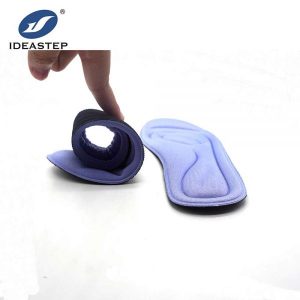
Soft and hard insoles offer distinct advantages depending on the specific needs and preferences of individuals. Here are some advantages of each type:
Advantages of Soft Insoles:
1. Cushioning
Soft insoles provide excellent cushioning and shock absorption, reducing the impact on your feet while walking or engaging in high-impact activities. They can help alleviate foot fatigue and provide extra comfort.
2. Pressure relief
Soft insoles distribute pressure more evenly across the foot, which can be beneficial for individuals with conditions like plantar fasciitis, arthritis, or foot-related pain. They can help minimize discomfort by reducing pressure points.
3. Arch support
Many soft insoles come with built-in arch support to provide additional stability and promote proper alignment of the foot. This can be particularly beneficial for people with flat feet or fallen arches.
4. Improved comfort
Soft insoles are generally more comfortable to wear, especially for individuals who spend long hours on their feet or have sensitive feet. They offer a plush, cushioned feel that adds an extra layer of comfort to your shoes.
Advantages of Hard Insoles:
1. Stability and support
Hard insoles, often made from rigid materials like plastic or carbon fiber, offer excellent stability and support to the foot. They can help correct overpronation (inward rolling of the foot) or supination (outward rolling of the foot) and improve overall foot biomechanics.
2. Enhanced durability
Hard insoles tend to be more durable and long-lasting compared to softer alternatives. They are better equipped to withstand constant use and resist compression over time.
3. Reduced shoe wear
Hard insoles can help prevent excessive wear and tear on your shoes. They act as a protective layer between your foot and the shoe, minimizing friction and extending the lifespan of your footwear.
4. Increased energy transfer
Hard insoles provide a firmer surface for the foot, allowing for better energy transfer between the foot and the ground. This can be advantageous for athletes or people engaged in activities that require quick movements and responsiveness.
It’s important to note that the choice between soft and hard insoles depends on individual needs, foot conditions, and personal comfort preferences. Consulting with a healthcare professional or podiatrist can help determine which type of insole is most suitable for your specific circumstances.
